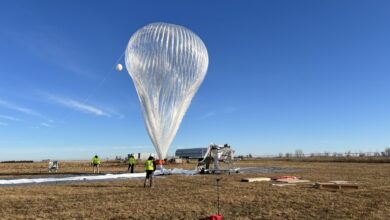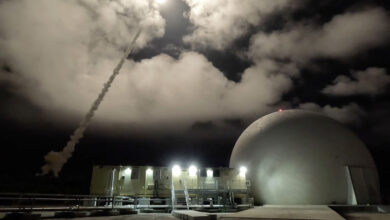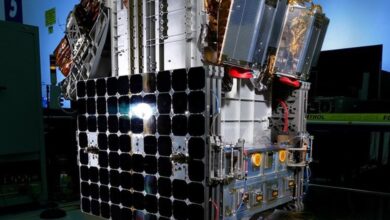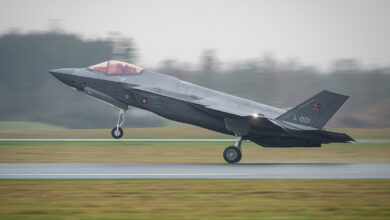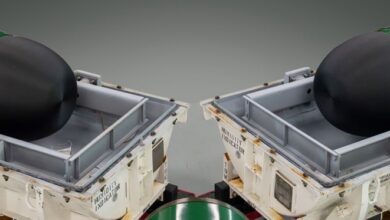US Space Force Missile Warning System Ready for Launch
The US Space Force’s (USSF) sixth and final Space Based Infrared System Geosynchronous Earth Orbit satellite (SBIRS GEO-6) is ready for launch after completing production in early September.
The Lockheed Martin satellite, built on the company’s LM 2100 spacecraft, is expected to be launched in the first half of 2022 aboard a United Launch Alliance-developed Atlas V 421 rocket.
According to the USSF, the LM 2100 spacecraft provides “greater resiliency and cyber-hardening against growing threats, as well as improved spacecraft power, propulsion and electronics,” than previous models.
Space Based Missile Warning System
The SBIRS is an infrared-based early warning satellite system that includes a combination of satellites and payloads in Geosynchronous Earth Orbit and Highly Elliptical Orbit.
Once launched, the satellite, equipped with “powerful scanning and staring infrared surveillance sensors,” will join the Space Force’s other missile warning satellites. The sensors will provide vast amounts of data to “detect missile launches, support ballistic missile defense, expand technical intelligence gathering and bolster situational awareness on the battlefield.”

SBIRS Successor
The USSF, meanwhile, has already begun work on a successor to the SBIRS program, the Next-Generation Overhead Persistent Infrared (OPIR) missile warning satellite.
According to the agency, the Next-Gen OPIR, which passed a critical design review in August, will utilize more capable sensors to detect enemy missiles through their heat signatures.
Need for System Upgrade
National Defense Magazine quoted the senior materiel leader for Next-Gen OPIR at Space and Missile Systems, Col. Dan Walter, who explained why the USSF now needs a missile warning system with more capable sensors: “There are shorter burn missiles, there’s advanced fuel, there’s a larger range of heat signatures.”
“We are improving the capability above and beyond what SBIRS has right now to be able to detect a broader range of the missile arsenals that are out there.”
Following critical design review completion, the program will see “flight-unit fabrication, assembly, system integration, and test,” the USSF revealed.
Satellite Launch in 2025
Director of USSF Space Systems Command’s Space Development Corps, Col. Brian Denaro, added that critical design review completion allows the program to launch a planned geosynchronous equatorial orbit (GEO) satellite in 2025.
“As the backbone of our nation’s assured missile warning capability, we are leveraging streamlined acquisition authorities on the Next Gen OPIR program to prototype solutions rapidly, using available industry capabilities and mature technology, to ensure that we can deliver advanced capabilities to the warfighter at operationally relevant speeds.”
Earlier this year, Lockheed Martin was awarded a $4.9 billion contract to provide three geosynchronous Earth-orbiting space vehicles and ground mission software for the program.
The Next-Gen OPIR Block 0 GEO System Critical Design Review is expected later this fall.





